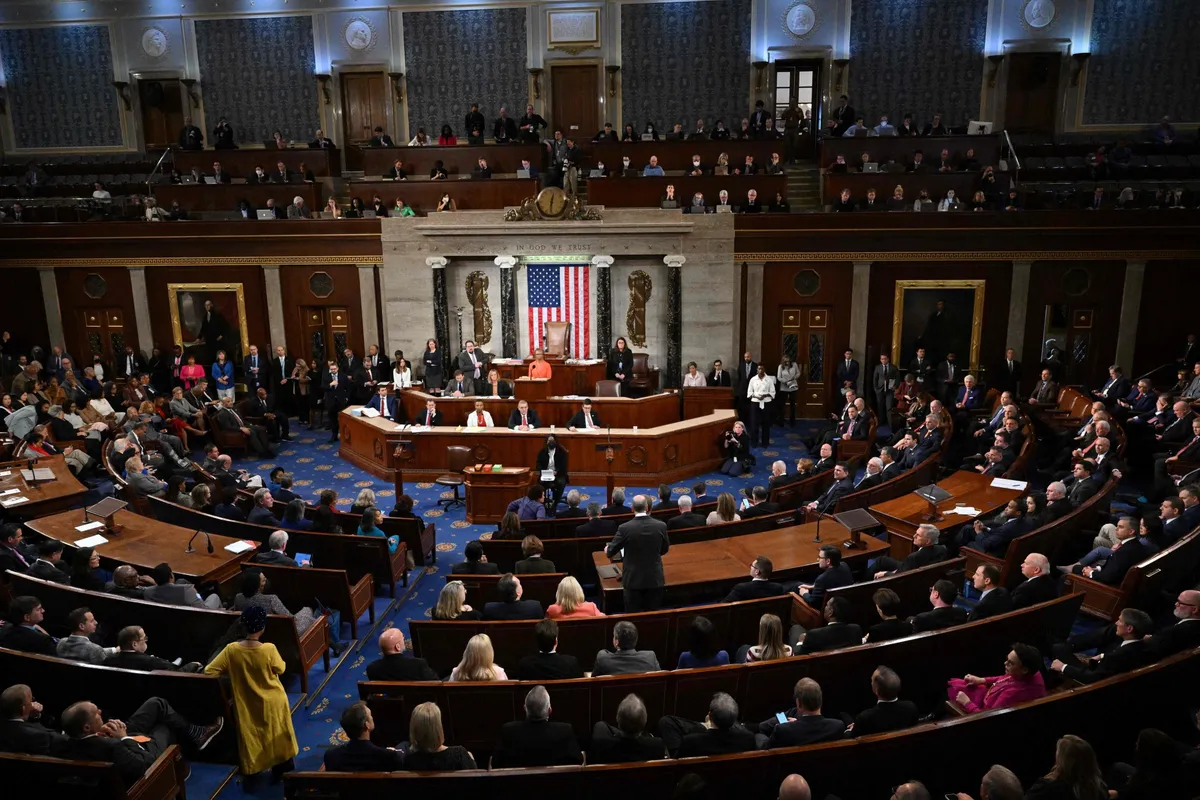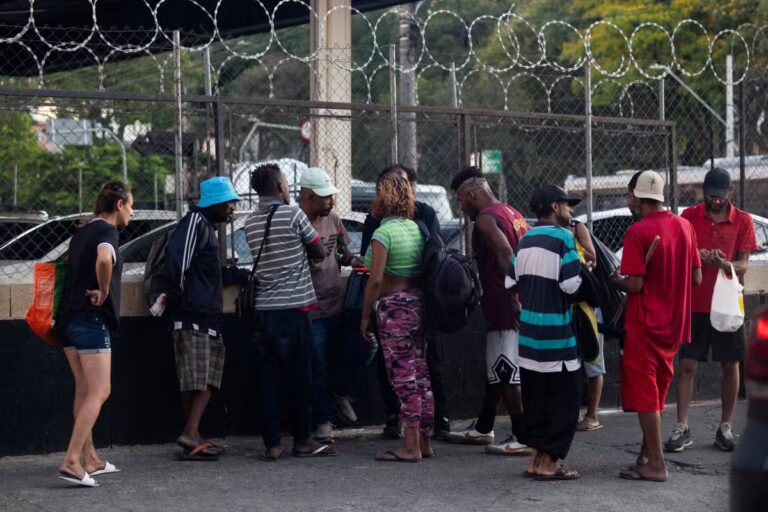
The US House of Representatives approved a bill this Wednesday to end the government shutdown (shutdown) the longest in American history, starting 43 days ago. After a 54-day recess, American lawmakers returned to the full House of Representatives today to debate and vote on a bill that would fund the government through January 30th. The spending package, which was also approved by the Senate on Monday by a narrow 222-209 vote, now goes to President Donald Trump, who has already signaled support for the project, for approval. Minutes before the final vote began, the White House reported that President Trump was scheduled to sign the bill today at 11:45 pm (Brasilia time).
- Abuse of minors: Epstein claims Trump ‘knew girls’ in emails released by US Congress
- Joel Berg: “President Trump wants to hide America’s hunger by deleting data as if our country were North Korea.”
Despite Republicans holding a majority in the House of Representatives, holding 219 seats to Democrats’ 214, the results were still unclear until the final moments of voting. Two Republicans voted against the plan and six Democrats voted in favor, confirming the full support of government officials and questions about the opposition’s non-unanimous rejection. Democratic opponents include Adam Gray of California, Marie Grusenkemp Perez of Washington, Jared Golden of Maine, Henry Cuellar of Texas, Tom Suozzi of New York, and Don Davis of North Carolina. Two Democratic and two Republican senators did not participate in the vote.
The main reason for the Democrats’ veto is the fact that the proposed bill does not meet their key demands. shutdown: Extension of federal health subsidies for approximately 24 million people. This is extremely important in countries without public health systems. The aid expires at the end of December, but President Trump’s Republican base has no plans to extend it.
The bill passed Wednesday includes a spending bill that will cover most of next year’s programs related to agriculture, military construction, veterans affairs, and legislative bodies. The bill also includes provisions that would restore jobs to federal employees who were laid off during the government shutdown and guarantee retroactive pay for those placed on unpaid leave, a proposal that opponent Sen. Tim Kaine (D-Virginia) has insisted is contingent on formal support for the proposal.
In the Senate, approval required much negotiation, and the bill was approved with the minimum 60 votes needed to advance to consideration in the House. Those who helped pass it included 52 Republicans and eight centrist Democrats who decided to bow to a bipartisan spending deal to end the government shutdown.
One of the Republicans’ strategies to win Senate approval was a promise by Republican Majority Leader Sen. John Thune to vote for the subsidy extension in December in exchange for support for eliminating the subsidy. shutdown.
The support of eight Democratic members came less than a week after the approval of California’s new district maps, the election of Zoran Mamdani, a self-proclaimed socialist, as mayor of New York City, as well as victories in key elections such as the gubernatorial races in Virginia and New Jersey, and came under much criticism within the party, exposing rifts within the party. Analysts say the results confirm Mr. Trump’s malaise among voters who see the Republican president as the biggest culprit in the election. shutdownhe puts the blame on the opposition.
On Sunday, after a preliminary vote on the proposal in the Senate, Sen. Bernie Sanders classified the night as “very bad.” Sanders, who is an independent but votes Democratic, said the party was in danger of creating a “political and public policy disaster” and that “causing to Trump now would be a terrible mistake.” Michigan Sen. Elissa Slotkin declared that a promise to vote on extending the aid is not enough, a position echoed by Tammy Baldwin.
The government shutdown had a severe impact on the American economy and society. For weeks, the chamber was virtually inactive, with no bills analyzed, no hearings held, and no plenary debates. As lawmakers went into recess (which they quickly described as remote work rather than a nearly two-month vacation), hundreds of thousands of federal workers went without pay, millions of low-income Americans wondered whether they would receive food assistance, and exasperated air travelers responded to thousands of delays and cancellations.
The Trump administration suspended funding for the Supplemental Nutrition Assistance Program (SNAP) during this period. shutdown. The move created a judicial gridlock from the moment the Supreme Court overturned a federal court ruling that forced the White House to release Snap Inc.’s resources during the shutdown.
After Justice Ketanji Brown Jackson granted an administrative stay to allow the Supreme Court to analyze the government’s request to withhold funds, the case was sent to the full court last Tuesday, which decided to maintain and extend the interim blockade until tomorrow (Thursday). The decision allows the government to withhold billions of dollars meant to buy food for 42 million low-income Americans while negotiations to end the government shutdown proceed.
- “Flying Tank”: President Trump sends 870 million reais worth of planes carrying missiles, guided bombs and artillery to Caribbean Sea
During the government shutdown, air traffic controllers have not been paid and many are unemployed, directly impacting the ability of the country’s aviation sector to function. As a result, the Trump administration ordered 40 airports across the country to cut flight numbers by up to 10% in an effort to alleviate the employee shortage. Last Friday, the first day the decision went into effect, there were 7,016 delayed flights and 1,025 canceled flights in the United States, including domestic flights and travel to and from the country. On Sunday, the crisis reached its peak at the airport, with 11,229 flights delayed and 2,954 canceled.
Unions say air traffic controllers are forced to continue working without pay as essential workers, resulting in many taking time off work due to illness or taking second jobs to make ends meet. Another factor that directly contributed to the crisis scenario at American airports is that the majority of the Transportation Security Administration’s (TSA) 64,000 employees are also not receiving paychecks.



